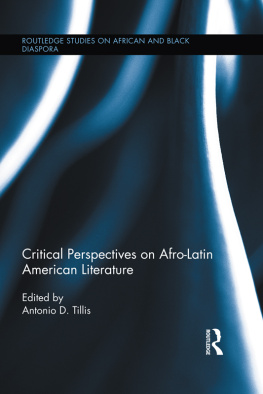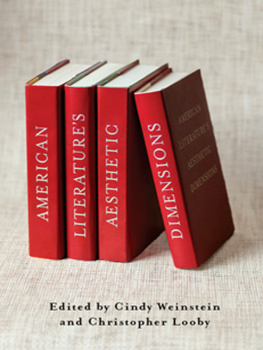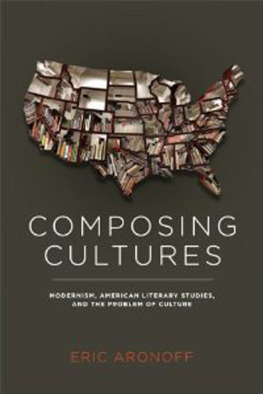John Neal and Nineteenth-Century American Literature and Culture
Edited by Edward Watts and David J. Carlson

Published by Bucknell University Press
Co-published with Rowman & Littlefield Publishers, Inc.
4501 Forbes Boulevard, Suite 200, Lanham, Maryland 20706
http://www.rowman.com
Estover Road, Plymouth PL6 7PY, United Kingdom
Copyright 2012 by Bucknell University Press
All rights reserved. No part of this book may be reproduced in any form or by any electronic or mechanical means, including information storage and retrieval systems, without written permission from the publisher, except by a reviewer who may quote passages in a review.
British Library Cataloguing in Publication Information Available
Library of Congress Cataloging-in-Publication Data
John Neal and nineteenth-century American literature and culture / edited by Edward
Watts, and David J. Carlson.
p. cm.
Includes bibliographical references and index.
ISBN 978-1-61148-420-5 (cloth : alk. paper) ISBN 978-1-61148-421-2 (electronic)
1. Neal, John, 1793-1876Criticism and interpretation. 2. Literature and society
United StatesHistory19th century. 3. National characteristics, American, in
literature. 4. CriticsUnited States. I. Watts, Edward, 1964- II. Carlson, David J.,
1970-
PS2459.N28Z73 2012
813'.2dc23
2011040992
 The paper used in this publication meets the minimum requirements of American National Standard for Information SciencesPermanence of Paper for Printed Library Materials, ANSI/NISO Z39.48-1992.
The paper used in this publication meets the minimum requirements of American National Standard for Information SciencesPermanence of Paper for Printed Library Materials, ANSI/NISO Z39.48-1992.
Printed in the United States of America
Acknowledgments
This project began at the Society of Early Americanists meeting in March of 2009 in Bermuda. Despite there being no panel dedicated to Neal, seven papers discussed his work. We would like to thank the Society for creating such a fertile forum for innovative and original scholarship. As the project developed, Greg Clingham at the Press and Joshua David Bellin, the manuscripts primary reader, encouraged us to improve the project through a series of revisions and restructurings.
Sections of David Carlsons essay appeared in Early American Literature and sections of Fritz Fleischmanns in A Right View of the Subject (1983) and Mythos and Aufklarung (1985). We thank the University of North Carolina Press and Peter Lang Publishers for permission to republish these materials.
Finally, we thank our wives and families for their continued support and love.
Introduction
Headlong Enterprise: John Neal and Nineteenth-Century America
Edward Watts and David J. Carlson
In 1845, commenting on the popular and controversial American writer and critic of the 1820s, John Neal (17931876), Nathaniel Hawthorne opined that surely [he] has long been dead, else he never could keep himself so quiet. Earlier in the century, as Hawthorne was well aware, Neal had indeed drawn considerable attentionfor his provocative historical romances and Byronic metafictions; for his controversial views on dueling, Indian Removal, and womens rights; and especially for his confrontational insistence that American writing had not yet distanced itself from its British roots and that its best writers had little feel for the new nation and its democratic identity. Contrary to Hawthornes supposition at mid-century, though, Neal had another thirty-one years to live and had hardly been keeping himself quiet. While he abandoned his earlier breakneck pace (encompassing novels, poetry, plays, and short stories), Neal continued an active, though evolving, public career throughout his final four decades.
Mistaken though it was, Hawthornes comment regarding Neals apparent silence remains critically instructive, for it draws our attention to a range of assumptions that contributed to the latters gradual disappearance from American cultural memory, an erasure this volume seeks to reverse. Hawthornes supposition suggests a focus limited to those forms of aesthetic criticism and literary writing that Neal had largely abandoned, forms more in line with both the tastes and concerns of the Brahmins who would shape the emerging narrative of the nations literary history in the nineteenth century and with now increasingly dated models of the American Renaissance in the twentieth. Even though he had largely given up fiction after the 1830s, Neal was still speaking and writing in many areas of the nations public culture. But because he was engaging alternate forms of self-expression (belletristic, critical, and activist), and because his focus was more specifically regional (concentrated on New England), by the 1840s he had fallen out of fashion among the literary elite circling the hub of Boston and Concord, a coterie that viewed itself as central to a national center of literary culture. To the extent that Americanist criticism of the antebellum period would come to focus primarily on that hub, Neal inevitably faded from the picture.
Recent Americanist criticism, however, has altered our understanding of the antebellum period in ways that make a Neal revival long overdue. Critics are now increasingly attentive to the fruitful interplay between popular and literary forms, to the existence of rich and diverse webs of print culture, and to the complex and various economies of authorship (Leon Jacksons term) in which writers of the time were embedded. As such, today we are well-positioned to reassess Neals significance in American literary and cultural history. Fully grasping Neals place in this history, though, requires rethinking some key details of his biography as well as a complication of the interrelations of region and nation, elite and popular art forms, and center and margin in the decades before and immediately after the Civil War. It is to those topics that we turn as a way of reintroducing John Neal to readers in the twenty-first century.
The Occasional Renaissance Man: Neal and the Nationalist Critical Tradition
In order to better situate our reconsideration of the different phases of Neals career (and our discussion of how those phases reveal new ways of reckoning his place within larger trends in the literary historiography of nineteenth century American writing), we must first begin with a deeper exploration of the sources of his critical neglect. With this in mind, one might note first of all how Hawthornes query regarding Neals disappearance relies upon his own sense of the gap between the emergent print culture of popular mass-market writing and the more aesthetically and universally oriented romanticism of the American Renaissance. David Reynolds has famously figured the relation between popular and Renaissance texts as a fruitful hierarchy, with the former being located somewhere metaphorically beneath, but providing fertile soil for, the latter. In this formulation, of course, the popular is nevertheless framed as low art, the other high. Reynoldss schema has been often challenged over the last two decades as ultimately, and perhaps ironically, affirming the centrality of the writers of the Renaissance despite his volumes attempt to democratize both its authors and their texts. But Hawthornes comment, as well as his even more famous frustration with the damned mob of scribbling women whose books outsold his own, clearly reflects those very writers own sense of aesthetic distance from what most Americans were reading and writing. A century and a half of subsequent American literary history would largely affirm Hawthornes principle of hierarchical selectivity, with writers such as Neal being largely written out of American literary history. Despite his 1820s celebrity and controversy, Neal had no place in a narrative of a national literary history that begins, essentially, with Emerson and his circles of acolytes and opponents in the 1830s.
Next page







 The paper used in this publication meets the minimum requirements of American National Standard for Information SciencesPermanence of Paper for Printed Library Materials, ANSI/NISO Z39.48-1992.
The paper used in this publication meets the minimum requirements of American National Standard for Information SciencesPermanence of Paper for Printed Library Materials, ANSI/NISO Z39.48-1992.